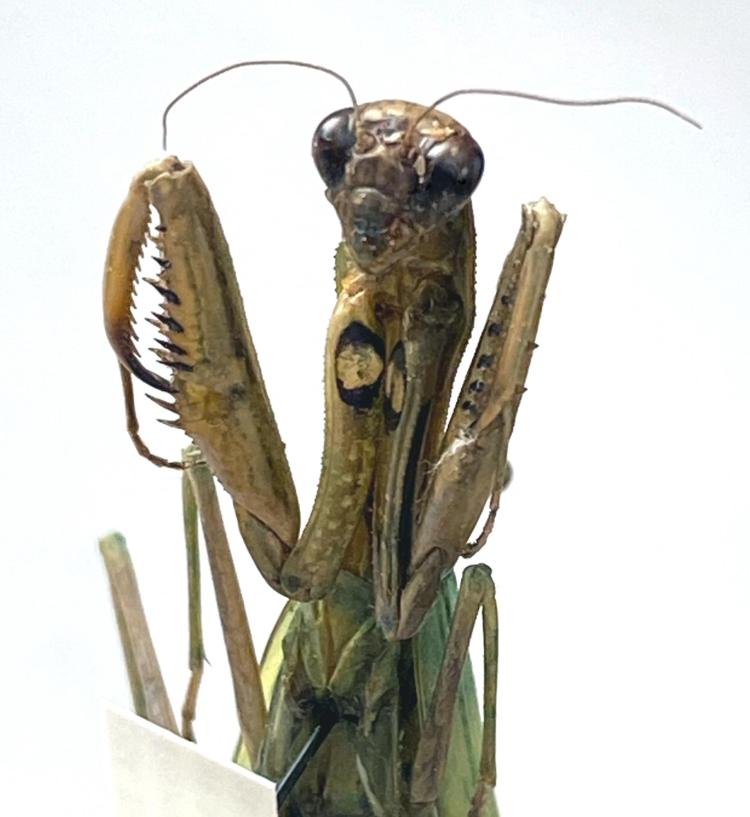The CU Museum is closed we will be opening early in the spring semester.
During this time, collection visits will be available by appointment and other special access requests will be considered on a case-by-case basis.
Please email cumuseum@colorado.edu for more information.
European Mantis

The European mantis is a voracious carnivore and ambush predator. They ambush insects (including other European mantises!) with their specially adapted forearms. In the image, you can see spikes on the insides of each of its raptorial arms, allowing this fierce hunter to puncture and hold its prey. M. religiosa’s special adaptations allow it to grab flying prey, making grasshoppers a popular option. Another unique feature of this species is its midline metathoracic ear, an ear on the ventral—underside—side of the mantis’ body, that allows it to hear high and low frequencies as well as ultrasound4. This ear helps aid in their predation, as they can lay in wait for prey items to move toward them before striking quickly with their spiked legs.
This insect is perhaps most famous for its unique mating behavior, referred to as sexual cannibalism. While all praying mantises eat other insects, females will consume potential mates. Males will cautiously approach females to initiate mating, pausing completely if he is noticed. If the female discovers the male before mating, she will attack his head and consume it. (However, headless males are still capable of mating, and in a lab experiment a headless female still accepted mates and laid a viable egg sack!) If males have gone unnoticed, they will jump on the female’s back from a distance and then begin mating. During this time, females will not attempt to eat the male, but she may catch and consume other insects that cross her radar. After mating, males abruptly fall off the female and try to back away undetected. Fortunately for the males, females only consume their mate 30% of the time3. After mating, the female will lay an egg sac and the eggs will hatch the following summer.
Common name: European mantis
Scientific name: Mantis religiosa (Order: Mantodea)
Catalog number: UCMC 0173347
Label data: USA: Boulder County Colorado; City of Boulder Open Space and Mountain Parks [with permit, exact location withheld]; 16 Sept 2010; Nufio Group
1. Roeder, K. D. (1935). An experimental analysis of the sexual behavior of the praying mantis (Mantis religiosa L.). The Biological Bulletin, 69(2), 203–220.
2. Scudder, S. H. (1900). Mantis religiosa in America. Psyche, 9, 095475.
3. Lawrence, S. E. (1992). Sexual cannibalism in the praying mantid, Mantis religiosa: A field study. Animal Behaviour, 43(4), 569–583.
4. Yager, D., and Hoy, R. (1988). The midline metathoracic era of the praying mantis, Mantis religiosa. Cell and Tissue Research. 250(3), 531-541.

